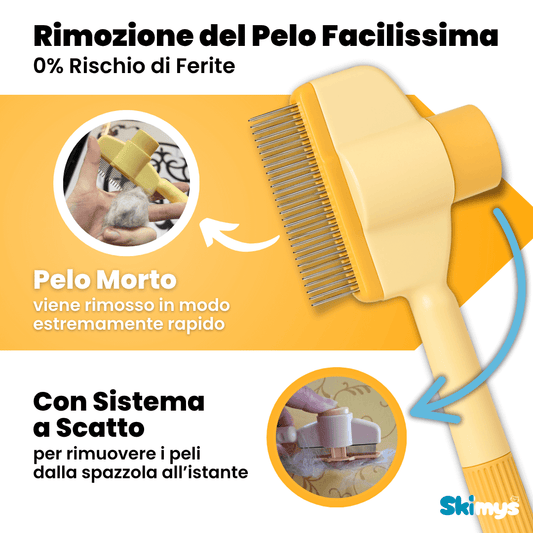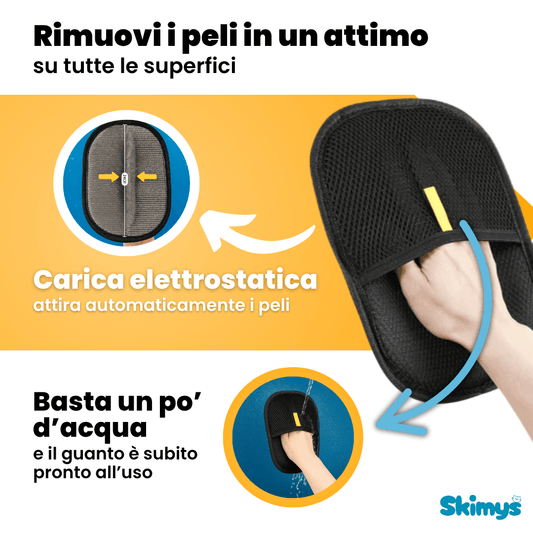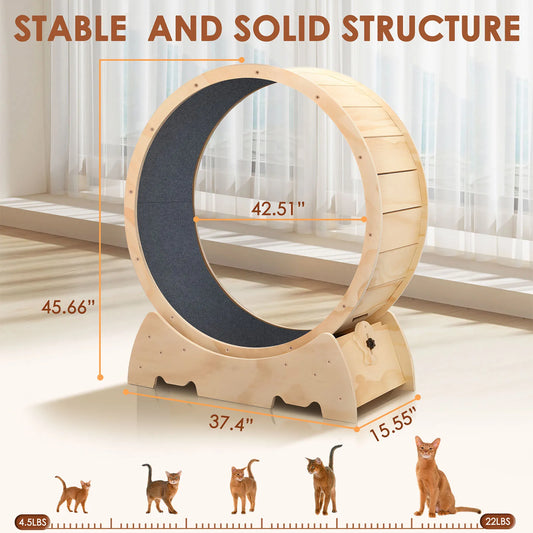Table of Contents
Introduction
Did you know that obesity among domestic cats has seen a significant rise, affecting nearly 60% of pet felines today? As cat parents, we often find ourselves pondering the ever-important question: how much should our furry companions eat? Understanding the right amount of food for our cats is essential to ensuring they live long, healthy lives while keeping their weight in check. This blog post will delve into the intricacies of cat nutrition, focusing on the amount and frequency of meals necessary for different stages of a cat's life, from playful kittens to senior purring pals. Check out our Cat Corner collection.
You might be curious about your own cat's eating habits and whether you're doing enough to maintain their health. By the end of this article, we hope to provide clarity on how to tailor your cat's diet to their unique needs, ensuring you can be the best pet parent possible!
The Importance of Proper Nutrition
Every cat is unique, and their nutritional needs vary based on several factors, including age, weight, activity level, and overall health. As a responsible cat parent, understanding how much food your cat requires is crucial for their well-being. Feeding your cat the right amount of food can help prevent obesity, malnutrition, and other health issues.
Factors Influencing Food Portions
Here are several key factors that influence how much food your cat should eat:
- Age: Kittens, adults, and senior cats have different nutritional requirements.
- Weight: The ideal weight for your cat will determine their daily caloric needs.
- Activity level: Active cats may require more calories than those who lead a sedentary lifestyle.
- Health status: Cats with specific health concerns may need special diets or portion adjustments.
Kittens: The Growing Stage
Kittens have unique dietary needs to support their rapid growth and development. From the time they are weaned at about eight weeks until they reach six months of age, their nutritional requirements change significantly.
How Much Should Kittens Eat?
- Ages 2-4 months: Kittens should eat about five meals a day, with each meal containing approximately 30-40 grams of high-quality kitten food. This is crucial for their growing bodies.
- Ages 4-6 months: As they transition to solid food, they may adjust to four meals per day. The amount per meal can increase to around 40 grams.
- Ages 6-12 months: Kittens should be fed three meals daily, with portions varying from 40-60 grams each. This is the time to introduce both wet and dry food to ensure balanced nutrition.
Importance of Balanced Nutrition
A well-balanced diet for kittens should consist of high-quality proteins and essential nutrients to support their growth. Both wet and dry food should be included, ensuring they receive adequate hydration and dental health support.
Adult Cats: The Maintenance Phase
Once your cat reaches adulthood (around one year of age), their nutritional needs stabilize. However, this stage still requires careful attention to their diet.
How Much Should Adult Cats Eat?
- Daily Caloric Needs: An adult cat typically requires about 200-250 kcal per day. This translates to roughly 50-70 grams of dry food or 150-200 grams of wet food.
- Feeding Frequency: Adult cats often thrive on two meals per day, but some may prefer smaller, more frequent meals throughout the day.
Portion Control and Weight Management
It's crucial to measure your cat's food and monitor their weight regularly. Avoid free-feeding (leaving food out continuously) to prevent overeating. Instead, consider using a feeding schedule to keep their weight in check.
Senior Cats: Adjusting for Age
As our cats age (around seven years and older), their metabolic rates often slow down, and their dietary needs change once again.
How Much Should Senior Cats Eat?
- Daily Caloric Needs: Older cats may require fewer calories, typically around 30-40% less than younger adults.
- Feeding Frequency: Seniors may benefit from smaller, more frequent meals to aid digestion, ideally two to three meals per day.
Choosing the Right Food
Senior cats often need easily digestible food that supports their aging bodies. Look for formulas specifically designed for senior cats, which are typically lower in calories and enriched with nutrients that promote joint and digestive health.
Special Considerations for Sterilized Cats
Cats that have been spayed or neutered may have different dietary needs due to changes in metabolism.
How Much Should Sterilized Cats Eat?
- Caloric Intake: Sterilized cats generally require fewer calories, as their activity levels may decrease. For a typical 4 kg cat, around 200 kcal per day is sufficient.
- Feeding Schedule: Maintain the same two-meal schedule but adjust portions based on their activity levels and weight.
Balancing Wet and Dry Food
Integrating both wet and dry food into your cat's diet can provide a varied and balanced nutritional intake. A good rule of thumb is to maintain a ratio of about 50% wet food and 50% dry food, but this may vary based on your cat's individual preferences and needs.
Advantages of Each Type of Food
- Wet Food: Provides hydration, particularly beneficial for cats that don’t drink enough water.
- Dry Food: Helps maintain dental health and is convenient for storage and feeding.
Practical Tips for Feeding Your Cat
- Read Labels: Always check the feeding guidelines on food packaging as they can provide specific recommendations based on your cat’s weight and age.
- Consult Your Vet: Regular vet check-ups can help ensure your cat's diet is appropriate for their health status.
- Monitor Weight: Keep an eye on your cat's weight and adjust their food intake accordingly, particularly if they are gaining or losing weight unexpectedly.
- Hydration is Key: Ensure your cat has constant access to fresh water, especially if they primarily eat dry food.
Conclusion
Feeding your cat the appropriate amount of food is crucial for their health and happiness. By understanding their unique nutritional needs at different life stages, you can ensure they receive a balanced diet that supports their lifestyle. Remember to pay attention to portion sizes, consult your veterinarian for personalized advice, and maintain a regular feeding schedule.
As you refine your cat's diet, consider enhancing their playtime with engaging toys like the Flappy Bird 2.0 Interactive Cat Toy, which can help keep them active and entertained. Explore our range of products tailored for your feline friend, and let’s make every day a fun-filled adventure together!
FAQ
How much should a healthy kitten eat?
A healthy kitten should consume about 30-40 grams of food per meal, with five meals a day until they reach four months.
How much should an adult cat eat?
An adult cat typically requires 200-250 kcal per day, translating to around 50-70 grams of dry food or 150-200 grams of wet food.
How should I feed my senior cat?
Senior cats may need fewer calories, around 30-40% less than younger adults, with two to three meals a day.
What is the best food for a sterilized cat?
Sterilized cats benefit from a lower-calorie diet, often formulated specifically for this purpose, to help prevent weight gain.
How do I balance wet and dry food for my cat?
A good balance is about 50/50, but adjust based on your cat's preferences and needs.
For more engaging products that enhance your cat's playtime, check out the Flappy Bird 2.0 Interactive Cat Toy here. Let's keep our furry friends happy and healthy!































